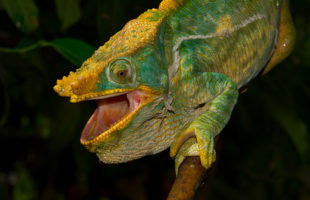It seems completely unbelievable that there are still lost species that could be rediscovered in the 21st century. But in Madagascar, almost anything is possible. And so in 2020, almost unbelievable news went around the world: A chameleon had been rediscovered after more than a hundred years! The whole story goes back to 1893. At that time, paleontologist Oskar Böttger, …
LesenSchlagwort-Archiv: Chameleons Madagascar
10 good reasons to travel to Madagascar
#1 Baobabs: Madagascar’s legendary Baobab Alley is located in the west of the island. The mighty trees with their impressive silhouettes are famous all over the world. On Madagascar there are seven different species of Baobabs, on earth, there are only eight species in total. Discover the Baobab forests of Andavadoaka and visit the “Mother of the forest” in Tsimanampetsotsa! …
LesenThe gentle giants: Parson’s Chameleons
Two chameleon species have been fighting over the title of Madagascar’s largest chameleon for decades. So far the Parson’s Chameleon (Calumma parsonii parsonii) won, whose officially measured representatives with scarcely 70 cm of total length created few centimeters more than the in Madagascar omnipresent Giant Chameleon (Furcifer oustaleti). Parson’s Chameleons belong to the most impressive reptiles of Madagascar. They live …
LesenThe second smallest reptile on Earth
It can sit on a matchstick without a problem, and you could almost think that the slightest breeze will blow the fragile pipsqueak off the match: Brookesia micra, the second smallest* reptile on Earth. Despite its few millimeters body lengths, the little, brown leaf chameleon has everything other chameleons need for life, too: Eyes moving to every possible direction, a …
LesenLife in colour: panther chameleons
Panther chameleons (Furcifer pardalis) belong to the most famous inhabitants of Madagascar and regularly populate the coastal areas of northwest Madagascar, across the north and on the east coast down to about 120 kilometres south of Toamasina (Tamatave). There seem to be no particular favourites among the populated habitats, even if one sees them particularly well in open, bush-covered areas. …
Lesen MADAMAGAZINE Your Magazine about Madagascar
MADAMAGAZINE Your Magazine about Madagascar





